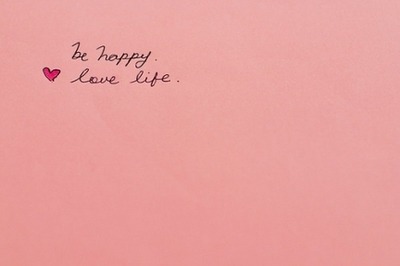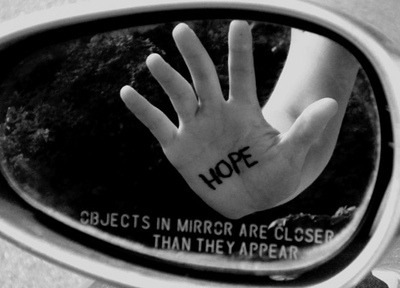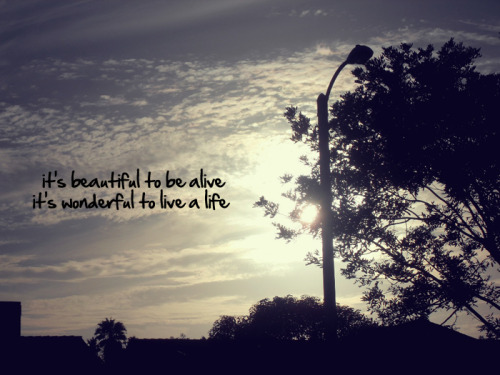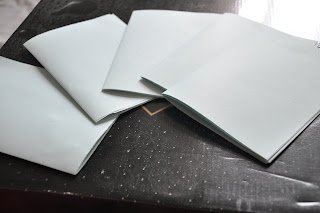:D
Wednesday, March 21, 2012
Monday, January 16, 2012
how to make a book (:
i was making a cloth covered book for my friend R's birthday and i sorta decided to photograph how i did it!

materials you will need:
paper
needle
thread
cloth
fold paper into half
organise them into signatures (a folded group of pages) and poke holes by the side
sew them together
sew it to the cover
measure and cut a piece of card board slightly smaller than 1 page
put the card between the cover and 1st page and sew the sides up!
Monday, September 26, 2011
comments
http://sylaep.blogspot.com/2011/09/introducing-artist-same-age-as-us-lee.html?showComment=1317025006749#c43632020341421122
http://st-art-lovin.blogspot.com/2011/09/key-chains-d.html
http://iamapurpleicicle.blogspot.com/2011/09/before-and-after.html?showComment=1317026129553#c2464758978269146042
http://ohmanitsming.blogspot.com/2011/06/pinholes.html?showComment=1317027247941#c6297010562950199588
http://chiawei-loves-colours.blogspot.com/2011/09/doodles-ddd.html?showComment=1317028863759#c9092755842805749530
http://st-art-lovin.blogspot.com/2011/09/key-chains-d.html
http://iamapurpleicicle.blogspot.com/2011/09/before-and-after.html?showComment=1317026129553#c2464758978269146042
http://ohmanitsming.blogspot.com/2011/06/pinholes.html?showComment=1317027247941#c6297010562950199588
http://chiawei-loves-colours.blogspot.com/2011/09/doodles-ddd.html?showComment=1317028863759#c9092755842805749530
Sunday, September 25, 2011
EOY2010 Street Scene by Liu Kang, 1956
 |
| Street Scene by Liu Kang, 1956 oil on canvas 128 x 84 cm |
The work shows a street scene which is probably situated in Bali. This is because Liu Kang went to Bali with the other pioneer artist such as Chen Cheong Swee in 1952. He was influenced by the naive innocence untouched by urbanization in Bali. Another clue is that the women in the work are dressed in colourful Batik sarongs which is the typical type of clothing that women wear in Bali. In the foreground of the picture, there are 4 women, 1 sitting on the floor dressed in a dark green blouse with flower prints with her back facing the viewer. Her hair is wrapped in a cream coloured cloth. To her left, there is a woman wearing a striped white shirt and bright orange sarong with black bird prints. She is sitting on a stool. In front of her, is a table with fruits like bananas and mangoes on it. there are also jars with colourful contents on the table. Perhaps they are pickled fruits. To the left of the table, there a bunch of unripened bananas and some green and red fruits placed on the floor. Perhaps she is a fruit seller setting up her stall by the street. This shows the simple lives of Bali women.
At the background, there are more women dressed in batik sarongs.They seem to be getting arond with their everyday activities. One example is a mother bending down and picking up something while a young naked child is tugging at her sarong. This shows the innocence and purity of the people there.
Also in the background, there is a man with a straw hat carrying a stick behind the group of women. He seems to be transporting something. At the very back of the cork, there are 2 women.They are not drawn with much detail. The viewer only can tell their positions one women is carrying a basket on top of her head while the other is putting her left hand on her hip. They seem to be walking on the street.
The daily and simple activities that occur on the street in Bali is portrayed in this work. It shows that though their lives are simple, they work hard at their work and are a group of happy and contented people. Lui Kang did this work as he liked scenes that were rustic. On his trip to Bali, he was inspired by the simple, innocent, contented lives of the Bali people.
b)Discuss the use of colour, brushwork and pictorial space in this painting
Liu Kang uses complementary colours. One example is the women in the foreground mending her stall and the woman sitting behind her. The former is wearing a bright orange-pink sarong while the latter is wearing a dark green blouse. The juxtaposition of the 2 colours make both look brighter. Another example is the woman squatting down in the middle. Her Batik sarong is dark red while the dots on it are light green in colour. The use of complementary colours make the dots stand out. Perhaps this is to hint that although the lives of the Bali people seem boring and mundane, if you look closely, their lives are actually very colourful and interesting.
Liu Kang painted in flat areas of colours. Hence the paintings seems rather flat and 2- dimensional. However, he does use darker tones of the same colour to show shadows. This can be seen in the woman sitting in the foreground, sitting diagonally behind the fruit seller.Her arm has 2 different tones. This gives volume and a sense of roundness to her arms.
Depth is created by the size of objects and people and the amount of detail present . People in the foreground are larger in size and are painted with more detail while people in the background is smaller in size and have little detail. This can be seen in the 2 ladies at the very back, they are smaller in size and their facial features are not painted. However in the foreground, the details of the fruit seller's clothes are clearly painted, like the black bird prints on her sarong.
Other than the people and the important objects related to what they are doing, everything else is black. For example the space on the left centre of the work is completely black. This perhaps is an influence from chinese painting ,留白,where areas are kept empty to balance the composition and prevent it from being too cluttered. This perhaps done also to draw focus to the activities of the people.
c)Explain what is meant by the "Nanyang Style" and how the art of Liu Kang exemplifies this style. Discuss with reference to the work above and a named work by another Nanyng Artist.
Nanyang style is the use of art techniques influenced by both western art and eastern art to depict a subject matter that is unique to the 南洋 region, local subject matter.
The work probably depicts a street scene in Bali which is only Characteristic to the 南洋 region.
Liu kang uses bold black calligraphic strokes as outlines to show forms, this may be an influence from the chinese calligraphic strokes used in chinese ink painting. An influence from the western post-impressionism is that paint is applied in flat areas of colours. This is evident in the works of Gauguin .The forms in the work are simplified. This may be an influence from the chinese style "xieyihua" where only the essentials are kept, details are ignored. "Bali Girl" by Cheong Soo pieng shows the side profile of a Bali girl in a Batik sarong The left top corner of the work is left completely empty. This may be an influence from the chinese technique of 留白. The The Bali girl and the sarong that she is wearing is something that is local and cannot be found anywhere else in the world. She is unique to this 南洋 region. Hence the subject matter is local. The medium in which the painting is painted is oil, which is typically a western medium. Yet, the painting is painted with a chinese flavour.
Nanyang style is the use of art techniques influenced by both western art and eastern art to depict a subject matter that is unique to the 南洋 region, local subject matter.
The work probably depicts a street scene in Bali which is only Characteristic to the 南洋 region.
Liu kang uses bold black calligraphic strokes as outlines to show forms, this may be an influence from the chinese calligraphic strokes used in chinese ink painting. An influence from the western post-impressionism is that paint is applied in flat areas of colours. This is evident in the works of Gauguin .The forms in the work are simplified. This may be an influence from the chinese style "xieyihua" where only the essentials are kept, details are ignored. "Bali Girl" by Cheong Soo pieng shows the side profile of a Bali girl in a Batik sarong The left top corner of the work is left completely empty. This may be an influence from the chinese technique of 留白. The The Bali girl and the sarong that she is wearing is something that is local and cannot be found anywhere else in the world. She is unique to this 南洋 region. Hence the subject matter is local. The medium in which the painting is painted is oil, which is typically a western medium. Yet, the painting is painted with a chinese flavour.
Inspiration - Dawn Tan
She is an Artist, illustrator, art teacher, knitter, food lover, quiet observer, day dreamer, adventurer and the author of http://hand-made-love.blogspot.com/ and she lives in Melbourne and is a singaporean!
i think that she is a really cool! she loves food, and food inspires her work. She also really likes craft and draws and paints really well.
for example here, here and here.
Another reason i think she is cool is cos she does art for a living and we all know that that isnt easy. for example she encountered some difficulties that made her mood bad however this is what she wrote:"
Now, those meanies can go ahead and bring me down in whatever way they want to, but they will never ever be able to take the happiness I get from working in a creative space along my joy of making art away. "
i think she is a really contented and positive person. she is happy just doing her art although it is really difficult. Her attitude really inspires me (:
i think that she is a really cool! she loves food, and food inspires her work. She also really likes craft and draws and paints really well.
for example here, here and here.
Another reason i think she is cool is cos she does art for a living and we all know that that isnt easy. for example she encountered some difficulties that made her mood bad however this is what she wrote:"
Now, those meanies can go ahead and bring me down in whatever way they want to, but they will never ever be able to take the happiness I get from working in a creative space along my joy of making art away. "
i think she is a really contented and positive person. she is happy just doing her art although it is really difficult. Her attitude really inspires me (:
Inspiration - shopping does not buy you happiness, but a concert may
Shopping does not buy you happiness, but a concert may
the straits times
monday, may 30 2011
pg A24, review
link to the article
As mentioned in the article, "However, contrary to expectations, research has rebuffed this proposition by demonstrating that neither the ability to acquire nor the actual acquisition of material goods leads to sustainable increase in happiness.
Instead, it has found that this relationship is negative-increases in material possessions may well be accompanied by a decrease in happiness. This phenomenon, termed the "hedonic treadmill", says that as possessions increase, so do people's expectations. Over time, people become less sensitised towards their possessions and require even more new possessions just to sustain the same level of happiness as before. Essentially, their efforts at increasing happiness via material acquisitions are in vain."
As seen from the article, the more one has and one wants, the harder one is happy. i guess this explains why people in less developed countries are happier than people in more well-developed countries. And those who are poor tend to be happier than those who are rich.
so happiness is not so much on how much you have but if you are contented with what you have!
the straits times
monday, may 30 2011
pg A24, review
link to the article
As mentioned in the article, "However, contrary to expectations, research has rebuffed this proposition by demonstrating that neither the ability to acquire nor the actual acquisition of material goods leads to sustainable increase in happiness.
Instead, it has found that this relationship is negative-increases in material possessions may well be accompanied by a decrease in happiness. This phenomenon, termed the "hedonic treadmill", says that as possessions increase, so do people's expectations. Over time, people become less sensitised towards their possessions and require even more new possessions just to sustain the same level of happiness as before. Essentially, their efforts at increasing happiness via material acquisitions are in vain."
As seen from the article, the more one has and one wants, the harder one is happy. i guess this explains why people in less developed countries are happier than people in more well-developed countries. And those who are poor tend to be happier than those who are rich.
so happiness is not so much on how much you have but if you are contented with what you have!
Inspiration - http://smileee.tumblr.com
i really dont know when i got to know this tumblr but i really like the things that the author posts. she (the person seems to be a female) encourages people to be happy,smile and to look at life in a positive light, have hope here are some examples:












she also posts beautiful pictures of landscapes, Perhaps showing that the world is already so beautiful why cant we just be happy?


















she also posts beautiful pictures of landscapes, Perhaps showing that the world is already so beautiful why cant we just be happy?






Subscribe to:
Posts (Atom)








